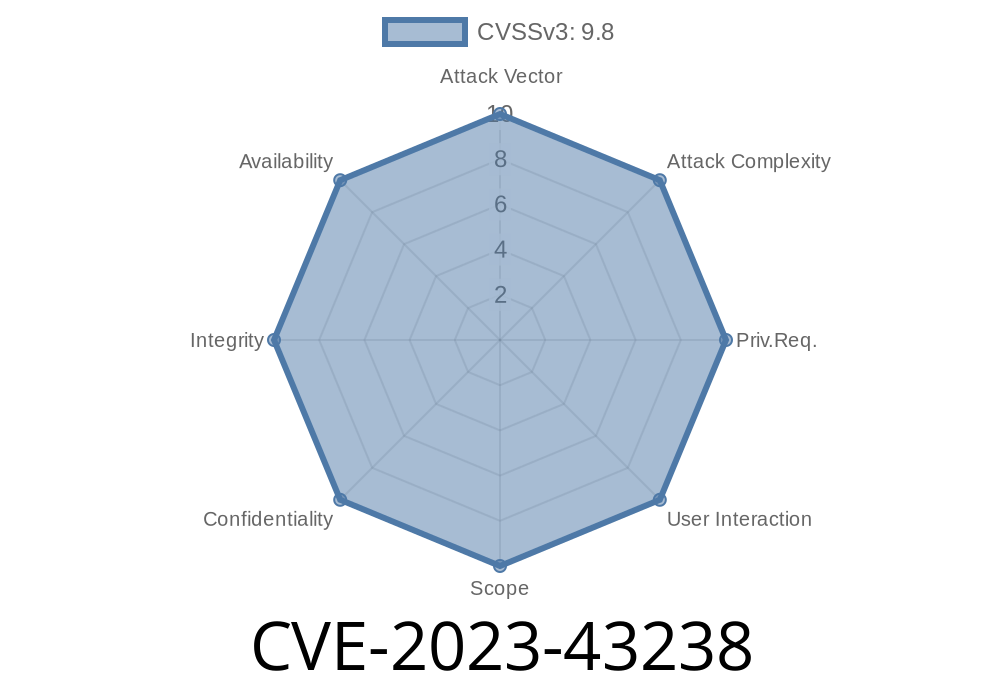A stack overflow vulnerability was discovered in the D-Link DIR-816 A2 v1.10CNB05 web interface. The affected router's firmware version contains an exploitable memory corruption issue via the 'nvmacaddr' parameter in the form2Dhcpip.cgi endpoint. This vulnerability, if successfully exploited, could allow an attacker to execute arbitrary code, tamper with network configurations, and possibly gain full control over the device.
Exploit Details
The CVE-2023-43238 vulnerability exists in the D-Link DIR-816 A2 v1.10CNB05's built-in web interface, specifically in the CGI script handling DHCP configuration for the router. The vulnerability occurs when a malicious request is sent to the form2Dhcpip.cgi endpoint containing an excessively long string in the 'nvmacaddr' parameter. An attacker-controlled buffer is then written to the router's memory, resulting in a stack overflow. This can lead to arbitrary code execution, data corruption, or potentially a full compromise of the device.
The following code snippet demonstrates a simple proof of concept (PoC) for this vulnerability
import requests
url = "http://<your_router_ip>/form2Dhcpip.cgi";
data = {
"nvmacaddr": "A" * 512 # Excessive length string causing the overflow
}
response = requests.post(url, data=data)
if response.status_code == 200:
print("The router may be vulnerable to CVE-2023-43238.")
else:
print("The router seems to be not vulnerable.")
Please replace <your_router_ip> with the internal IP address of your router before executing this script.
Original References
1. D-Link firmware download page - for users who would like to download the firmware update if it becomes available.
2. MITRE's CVE entry for CVE-2023-43238 - Contains additional details about the vulnerability.
3. NVD's CVE entry for CVE-2023-43238 - Another source for vulnerability details and related information.
Mitigation
It is strongly recommended for users to keep their router's firmware up to date with the latest security patches released by D-Link. Unfortunately, as of the writing of this post, no official firmware update addressing the CVE-2023-43238 vulnerability has been released by the vendor.
Until an official firmware update is released, users can consider implementing the following workaround to reduce the risk of exploitation:
- Restrict access to the router's web interface, allowing only trusted IP addresses to access the management console.
- Change the router's default login credentials to a strong and unique password/username combination.
Regularly check for updates on the D-Link website or subscribe to their security notifications.
Stay safe and keep your device's firmware up to date to protect yourself against known vulnerabilities.
Timeline
Published on: 09/21/2023 13:15:10 UTC
Last modified on: 09/22/2023 02:19:15 UTC
